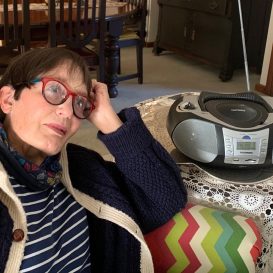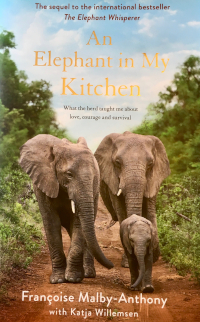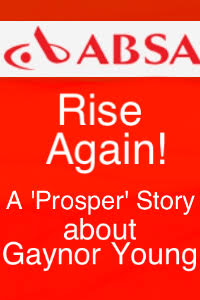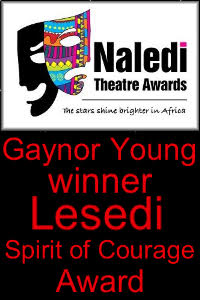 “Overall, my aim is to make the world a brighter place, through the use of illustration.”
“Overall, my aim is to make the world a brighter place, through the use of illustration.”
Nande Hattingh
I wriggled my feet in the grass, took a deep breath of the gorgeous air and sat back with my eyes closed, revelling in the glorious morning. I was sitting next to a bed of lavender and was overwhelmed by the buzzing of bees. I opened my eyes and truly looked at the busy activity taking place in front of me. I loved the smell and look of the silver stemmed purple flowering lavender plants. The bees obviously felt the same way. They sucked up the nectar with a greedy joy. There is so much about nature that I wish I could capture as an artist. I would love to be able to paint, draw or take photographs. Unfortunately, that is not the life that has been picked out for me. So I closed my eyes once more and enjoyed the sound.
A week later, I was walking around an exhibition of Nande Hattingh’s beautiful work at Cape Palette Gallery. The images I saw before me, took my breath away with their intricacy and detail. Then I stopped short. There were my bees!
I drew closer to the picture and really studied it. The bees rather than being amongst my lavender appeared to be among Pincushion Proteas. I would have expected these to have been painted vivid reds, oranges and yellows, dynamic hot colours. Instead these bees were buzzing amongst Proteas that were cool blues and greys in hue. Why this strange juxtaposition? Was the artist making a statement about the demise of bees and plant germination, thus the absence of vibrant, alive colours? Inwardly I laughed at my supposition. The bees could be nestled amongst those muted blueish, grey flowers merely because Nande liked that particular effect.
This is the thing about art.
‘Art is in the eye of the beholder!’
 When I met Nande Hattingh, I was surprised to find she was twenty-three. She looked even younger. Fresh faced and clear eyed, not a scrap of makeup. She exuded a special kind of naturalness and was dressed with a bohemian flair which I love. Throughout our encounter, I was struck by her passion for nature. There was no affectation or pretence about her. I laughed when I heard that she was drawing before she could walk, even if it was with her mothers make-up! She studied for her degree at the Open Window Institute. Initially her artistic style was too fluid and lacked definition. She tightened her work by swapping her pencil for a fine-liner pen. As she said: “You can’t erase pen. Any line once drawn has to be integrated into the overall image.”
When I met Nande Hattingh, I was surprised to find she was twenty-three. She looked even younger. Fresh faced and clear eyed, not a scrap of makeup. She exuded a special kind of naturalness and was dressed with a bohemian flair which I love. Throughout our encounter, I was struck by her passion for nature. There was no affectation or pretence about her. I laughed when I heard that she was drawing before she could walk, even if it was with her mothers make-up! She studied for her degree at the Open Window Institute. Initially her artistic style was too fluid and lacked definition. She tightened her work by swapping her pencil for a fine-liner pen. As she said: “You can’t erase pen. Any line once drawn has to be integrated into the overall image.”
Nande describes herself as an illustrator more than an artist. I see her as a 21st century illustrator. She scans her newly penned images into her computer and adds colour and texture digitally, layer by layer. Not for her the smell of turpentine and oily brushes!
Nande’s love of the natural world began as a child and has never waned. Her daily runs turn into foraging expeditions. She discovers new treasures – flowers, seed-pods, shells, feathers, moss, tangled sea weed and these fuel her creative imagination. New illustrations emerge from the ‘energy’ surrounding these natural prizes.
 I studied her image of a butterfly, or perhaps it’s a moth, atop a ball of tangled willow vines. I found it a captivating image. The caterpillar forms into a chrysalis which finally emerges as a beautiful ‘butter-moth’ from it’s cocoon. I like to think that subconsciously this was why Nande placed this beauty amongst a ‘chrysalis’ of tangled vines. To me, the willow vines and the ‘butter-moth’ represent new life and growth!
I studied her image of a butterfly, or perhaps it’s a moth, atop a ball of tangled willow vines. I found it a captivating image. The caterpillar forms into a chrysalis which finally emerges as a beautiful ‘butter-moth’ from it’s cocoon. I like to think that subconsciously this was why Nande placed this beauty amongst a ‘chrysalis’ of tangled vines. To me, the willow vines and the ‘butter-moth’ represent new life and growth!
 I love the drawing of a ladybird resting on a fern. The fern is made up of different shades of greens, yellows, purples and pinks. Are the purples and pinks perhaps a reflection of the Erica found interspersed between the ferns in the forest? l was intrigued by Nande’s annotation about the ladybird being known as ‘God’s little cow.’ I shall now always refer to them that way!
I love the drawing of a ladybird resting on a fern. The fern is made up of different shades of greens, yellows, purples and pinks. Are the purples and pinks perhaps a reflection of the Erica found interspersed between the ferns in the forest? l was intrigued by Nande’s annotation about the ladybird being known as ‘God’s little cow.’ I shall now always refer to them that way!
 One can sense the doggedness within this swallow as it builds its nest, mud pellet by mud pellet. The birds determination seeps from Nande’s drawing towards the viewer. The image reminded me of a recent journey through the Little Karoo. I came across a swallow making it’s nest high in the eaves of a porch. Where was it getting the water to make the mud pellets from? Why was it making its home in this hot, arid landscape, I mused? I wonder if swallows are still making their mud pelleted nests in Cape Town with the current water shortage? Or perhaps, they have all evacuated Cape Town for other more flowing parts!
One can sense the doggedness within this swallow as it builds its nest, mud pellet by mud pellet. The birds determination seeps from Nande’s drawing towards the viewer. The image reminded me of a recent journey through the Little Karoo. I came across a swallow making it’s nest high in the eaves of a porch. Where was it getting the water to make the mud pellets from? Why was it making its home in this hot, arid landscape, I mused? I wonder if swallows are still making their mud pelleted nests in Cape Town with the current water shortage? Or perhaps, they have all evacuated Cape Town for other more flowing parts!
Nande’s images make me so aware of the astounding sense of awe that nature can induce. I have been blind to the wonder encapsulated in a single daisy. I remember watching male weaver birds striving to make the perfect nest for their partners. Ms Weaver would take a look around inside, decide the nest was not up to scratch and would tear it down. One could literally see the male weaver bird’s chest deflate. Then he would begin all over again. Nande’s works has widened my eyes to the natural beauty around me, in the same way my Cochlear Implants re-opened my ears to sounds in nature. I cannot explain to you the joy of ‘hearing’ birds, crickets, rain and…..bees.
We must all appreciate and paint the sublime in nature – in our minds!
 This week, I am going to a lecture on birds…….
This week, I am going to a lecture on birds…….




















My dearest Gaynor. Love reading your wonderful blogs. The paintings or illustrations are given extra meaning through your words.
Your Mom looks wonderful as do you. You are my inspiration. Lots of love xxx
Thank you for sharing your experiences and this wonderful artist! I so enjoyed reading it. I love that you stop and smell the roses. We should all do that more often, nature has such perfect balance that it is infectious. We all can benefit from this contemplation. Thanks again Gaynor.
‘Nature has such perfect balance that it is infectious.’
I love that comment of yours, Andre, it’s so perfectly true. I find Nande’s work fascinating. I am glad you did too!
With a smile I kiss your eyes
Gaynor
Loved her paintings,well written so it was worth all the effort!!!!Well done. All love Mums
Laugh – glad you loved the paintings, Mums!
With a smile I kiss your eyes
Gaynor
Comments are closed.